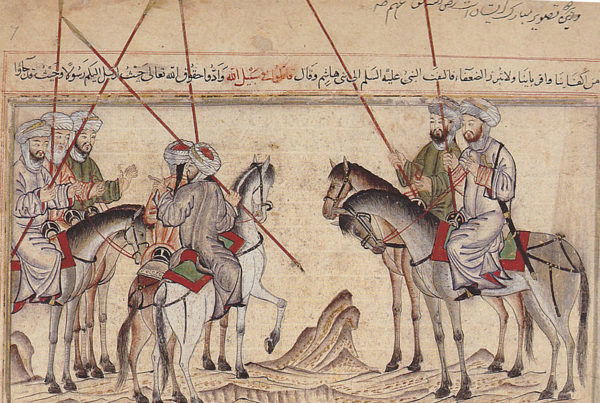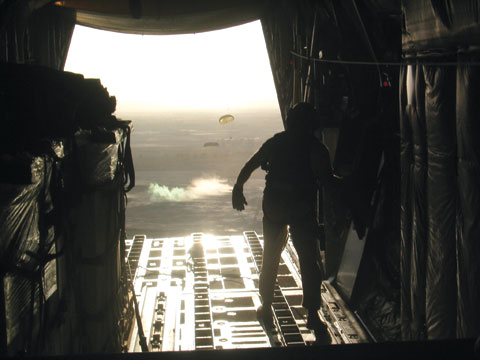During and after any conflict, soldiers, analysts, and others try to parse and publish the hard lessons learned on the battlefield. This holds true with today’s emphasis on the counterinsurgency efforts in Afghanistan and Iraq.
The new book by Christopher D. Kolenda, a retired US Army colonel and veteran of three tours in Afghanistan, lives up to its title and challenges the reader through each chapter.
The Counterinsurgency Challenge is a tactical military tract in the manner of one old treatise; The Defence of Duffer’s Drift, [1] and one not so old; The Rise, Fall, and Rebirth of the Emma Gees. [2] In these, help came from information gleaned in a dream, in this new book, wisdom from a digital world.
Duffer’s Drift is set in South Africa during the Boer War. Lieutenant Backsight Forethought (“BF”) goes through a series of fictional scenarios as “dreams” with his fifty soldiers defending Duffer’s Drift, (a ford to a river). He learns and succeeds through the lessons learned in each dream.
In the Emma Gees a ghost from the past, a Canadian soldier of World War I, visits a new company commander. Set in Germany circa 1980, just after a fictional onslaught by the USSR, the “Old One” visits our protagonist in a dream helping him relearn the lessons of World War I to succeed.
Mr. Kolenda’s battalion commander protagonist is not aided by dreams; rather in the near future, he enters the realm of the simulator.
To do a completely realistic live learning exercise is extremely difficult and expensive to mount. Indeed giving commanders “do-overs” on exercises requiring hundreds of troops is simply not possible. However, in our high tech world, “do-overs” are doable and so our commander dons the equipment and enters the simulator.
The book begins with a foreword by Gen. McChrystal – of counterinsurgency fame – emphasising the need “to understand the forces and motivations that drive behavior” when dealing with an insurgency. He urges the reader to “focus less on the ‘solution’ that the narrator arrives at and more on the analytical process he moves through to get there”.
With a list of the local actors and a scenario, our commander and his battalion are to be deployed in Narabad Province in the Republic of Khanastan. The stage is set and with two very different mentors assisting our protagonist, he begins his training in the simulator before he deploys for real.
Written in the first person, the book reads as the protagonist’s personal journal.
Initially aggressive in his first of six scenarios he begins to pacify an area but enemy contacts increase, insurgent leaders’ influence increases, civilians are killed by friendly fire, casualties mount, morale drops, and IED attacks result in looming chaos and failure. Exit the simulator. At the end of each chapter/scenario he recounts an initial debrief and outlines the logic of his actions. Upon analysis from the simulator, the feedback shows where he went wrong.
As with any exercise or simulation, an improbable result can occur (although the battles of Marathon, Thermopylae, and others would decry that). These probabilities are debated by the two mentors who have different views. This adds a dialectic to the “debrief” that occurs after each scenario. This is followed by a short “key lessons” learned.
The battalion commander works his way through six simulations, each time delving deeper into the problems and outcomes. Learning as he goes, so too does the reader begin to understand the “COIN math”. Winning the counterinsurgency battle is far more complex than initially thought. The kinetic — or fighting — part of COIN gives way to almost a civil/military (CIMIC) viewpoint. The reader will discover the disconnect between government, its governance, and the governed; and how tribal, political, and financial elements influence the actions of the local populace.
The requirement for the commander to become a “player” in the real or imagined scenario is highlighted. He cannot view the situation in isolation. The cultural divide needs to be bridged and so the reader will find the duplicitous tribesman, the corrupt politician, and the everyman villager. The key to success is finding what the balance of power is between all the actors and finding out what motivates them, and then analyzing that information to identify actions that will further the pacification mission.
By the final scenario, the commander has become much more attuned to the people living in his operational area. Using the least kinetic force possible and relying more on CIMIC tactics and getting local intelligence enables the friendly forces to not only tactically out-manoeuvre the insurgents but also undermine them through devious PSYOPS methods.
Gen. McChrystal stated in his foreword that the counterinsurgent may be more comfortable with the least precise and effective tool – kinetic operations. Mr. Kolenda’s book takes the reader on the journey to find out why – in counterinsurgency terms – less can be more.
Although longer than a pamphlet, this new addition will sit very comfortably on my shelf of tactical missives. A good book for anyone interested in counterinsurgency, but I would also put it on the “must read” list for junior officers.








